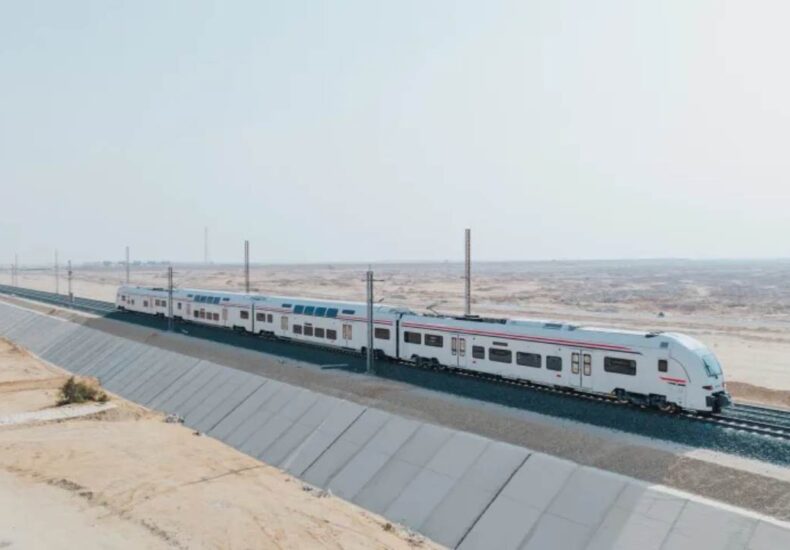
Egypt’s New 155mph Desert-Proof Trains Mark a Historic Leap Forward
Fundacion Rapala – The Egypt’s high-speed trains project has opened a new chapter in the nation’s transport history. Siemens Mobility presented its Velaro train at TransMEA 2025, drawing attention from engineers, travelers, and government officials. The train, built to handle extreme heat and sand, can reach 250 kilometers per hour. The unveiling felt like more than a technical showcase. It became a moment that symbolized Egypt’s drive toward faster, more reliable travel. Many visitors described the scene as inspiring because it offered hope for improved mobility across the country. For a population familiar with long journeys and slow connections, the arrival of a modern, high-speed system created excitement and fresh optimism.
A Robust Train Designed for Egypt’s Harsh Desert Climate
The Egypt high-speed trains stand out because Siemens redesigned the Velaro model to function in a tough desert environment. The train has stronger cooling systems and dust-resistant filtration to maintain performance in high temperatures. Built in Germany, each unit seats 489 passengers and is engineered to work smoothly even under harsh conditions. This design shows how global technology can be shaped to meet local challenges. Many people praised the effort because it proves the system is not simply imported but truly adapted to the country’s needs. It also shows a commitment to long-term reliability, which is essential for a project of this size.
A New 2,000-Kilometer Network Connecting Nearly All Major Cities
The Egypt high-speed trains will run on a 2,000-kilometer network now under development. The system will serve almost 90% of the population and reduce travel times by up to 50%. Built with Arab Contractors and Orascom Construction, the project aims to link major cities through three main lines. These routes will connect communities that previously faced long, difficult trips. Shorter journeys will help families, workers, and travelers move more easily. Many people believe this project will change the daily rhythm of life across the country. A faster network also strengthens economic activity because it makes movement between cities easier and more affordable.
Desiro Trains and the “Suez Canal on Rails” Freight Revolution
Alongside the Velaro model, Siemens introduced the Desiro High-Capacity regional train, which reached 160 kmph during its first test run. This train supports the Green Line, a freight network often called the “Suez Canal on Rails.” The system will run 660 kilometers from the Red Sea to the Mediterranean. It includes a dry port that can store up to 260,000 containers and contains five dedicated rail lines. Egypt expects freight capacity to rise by 46% once the network is complete. This development shows that the high-speed project is not only for passengers. It also adds strength to the nation’s logistics sector and boosts trade potential.
“Read More : Call to Earth Day 2025, Guard Your Green Space with Global Action”
Government Leaders Celebrate a Major Step in Transport Modernization
The progress of the Egypt high-speed trains project has earned strong support from national leaders. Lieutenant General Engineer Kamel El-Wazir called the Desiro train’s first journey a “defining moment.” His statement highlights the country’s desire to modernize travel while improving comfort and safety for citizens. Many Egyptians have long relied on outdated rail systems, slow buses, and long road trips. This new project aims to provide a different experience one built on speed, safety, and efficiency. The government hopes this modern network will create pride and bring the nation closer to global rail standards.
Africa’s Wider Move Toward High-Speed Rail Connectivity
The rollout of the Egypt high-speed trains fits into a larger trend happening across Africa. Morocco launched the continent’s first high-speed line in 2018, operating trains at 320 kmph. Nigeria is developing a 4,000-kilometer network worth $60 billion, supported by local and international partners. The African Union is also planning long-distance routes under its Agenda 2063 project. If these plans continue on track, many African cities could become more connected than ever before. Experts expect a drop in transport costs and a significant rise in inter-African trade. Egypt’s progress is an important milestone in this ambitious continental vision.
A Future Built on Speed, Access, and Better Connections
The introduction of the Egypt high-speed trains reflects a wider hope for better mobility and stronger community ties. Faster routes will help families reunite more often, allow workers to consider jobs farther from home, and make domestic travel more enjoyable. The system represents a new promise for a country ready to embrace modern infrastructure. As construction continues, each completed track brings Egypt closer to a future where movement feels smoother and more dignified. This project stands as a symbol of ambition, showing how innovation and national pride can work together to build a better tomorrow.